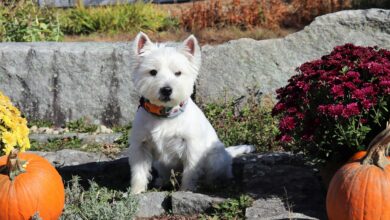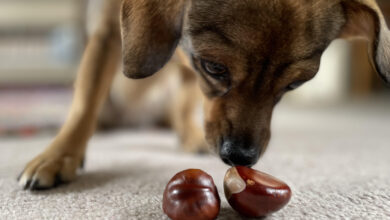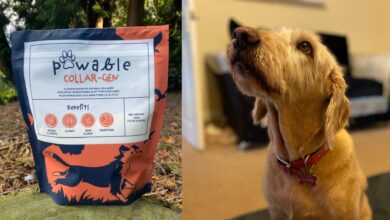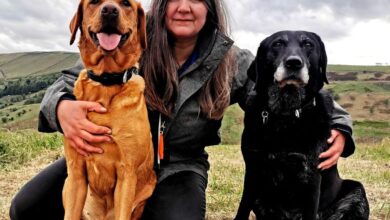6 Exercises Your Westie Can Do at Home
Start a New Fitness Programme with your Bestie in the New Year.
I’m a firm believer in not walking a dog seven days a week. We take our dogs to the park, often the same one, run around for an hour often covering far more miles than we do when we walk with them. We ask them to do this seven days a week and they happily oblige, but think about it, we are asking them to do the same workout every single day.
Those of you that are keen gym goers will know that rest days are just as important. This allows the body to recover and repair. Well, it’s the same for dogs. So, whilst we may have a recovery day of either complete rest or stretching, our dogs could be doing something different…. mind games (enrichment games), specific exercises for strength, hide ‘n’ seek, refreshing recall/obedience. Teaching new tricks to dogs will also help increase the bond between you and your furry friend and they will get just as tired as if they had been to the park.
For my girls if they are doing agility or flyball then they won’t be getting a walk, they will also be having a day a week where they do something else. I have plenty of rehabilitation equipment at home, so they can have their own little gym session with wobble boards, wobble cushion, rocker boards and hands on starter exercises. There will be more days out to explore places for different scenery and terrain to help keep them stimulated and their core active.
What can you do at home?
There are plenty of very simple and fun exercises that you can do with your furry pal at home that will not only help deepen the bond between you but will also benefit your Westies’ health with just some simple strength training as well as working their nervous systems. All these exercises can be mixed and matched, you could do two on one day and a different two on another for example.
Paw Lifts
With your dog standing balanced and square on all four paws, kneel on the floor by the side of them, with one arm gently support them around and under their rib cage and with your other hand gently lift the paw on the opposite side of their body to you about two inches off the floor, hold this for five seconds and then place it back down, remember to gently support – don’t hold the dog tight as this will negate the exercise. Repeat this on all four paws three times. Over time try to increase the time from five to 10 to 15 seconds up to 30 seconds. This can be done twice a week.
Circles
If your dog is fit and healthy and has no underlying conditions such as arthritis circles are a great idea. The easiest way is to get them to walk around you. Stand with your feet shoulder width apart and with a treat encourage your dog to go round you in a circle. Make sure your dog is bending their spine round you to create an arc as they go round. Start with three times in each direction as one set and work up to five sets.
Figure of 8
As long as your dog doesn’t have any underlying conditions such as arthritis or limb issues you can adapt your circles to figure of 8’s. The easiest way is to create a figure of eight around and through your legs. Again, three times in each direction makes one set and you want to aim for five sets.
Sit to stands
Using a treat ask your dog to sit, try and avoid “lazy” sits where they sit on one bum cheek leaning. The idea is to get them to sit in a ‘good’ sitting position. Stand in front of them and using the treat (draw it slightly down and towards you, this gets their head lowering slightly which will encourage their back end to lift) get the dog to stand, then ask them to sit. Ideally the dog shouldn’t need to take a step back to sit or to take a step forward to stand. This strengthens their hindlimb muscles and is affectively a squat for dogs! You don’t have to give them a treat on every sit or stand, maybe after every third one. Aim for 10 repetitions in a set and build over time to five sets.
Pole work
If you have a set of cavaletti poles at home that’s great, however when I go to clients’ houses and ask them to do this in between sessions I usually get them to do it with brooms or mops and to change the height we prop them up on books, bricks etc.
Start with three poles at a height of just below their ankle, spaced at double the length of your dog, and simply get them to walk over the poles, you can add to the number of poles and decrease the space in between. The tighter the poles the harder it is. Once they are happy and comfortable and not clipping or knocking the poles flying, you can start to change the height, but I wouldn’t go higher than halfway between ankle and knee.
Remember the dogs are supposed to be walking, not running over the poles. You can do this in sets (three poles each way is one set) or you can do it in time intervals of 20 seconds, or even alternate.
This is a great exercise as you can vary it so much, alternating the height of the poles, changing the spacing or the time structure (sets/seconds) and you can even try placing the poles in an arc, circle, or zig zag. Always start low and wide and make it harder when they are comfortable.

Wobble Cushion
For those dogs that find the paw lifts easy, we can make it a little harder. If you have a wobble cushion (round rubber disc filled with air), if not you could use a plump cushion or folded duvet (although not as good), we can start building their core strength a little further.
With the wobble cushion on the floor let your dog explore and sniff it so they become acquainted, then encourage them to stand with their front paws on the cushion. If using treats, you can encourage them to stand on it then great, if not gently place their front paws on the cushion whilst supporting them. Once they have their front paws on, release the support you are giving them slowly. They will start to wobble around but gradually they will get the idea and start to gain balance. Start with five seconds and three sets and build the time slowly to 10, 15 seconds onwards to 30 seconds (again three sets), when they are around 15 to 20 seconds with their front paws encourage them to have their back legs on instead, again start with 5 seconds and three sets and build it up in conjunction with the front legs. If things are going well, you could try all four paws on the cushion or forelimbs on one cushion and hindlimbs on another cushion, depending on the size of the dog.
Remember to always make it fun, and that any treats come out of their daily allowance……. we don’t want obese dogs now do we?
These exercises are done at the owners and dogs own risk, if unsure if these are suitable for your dog, please seek professional advice from your primary care vet or a qualified animal practitioner.






